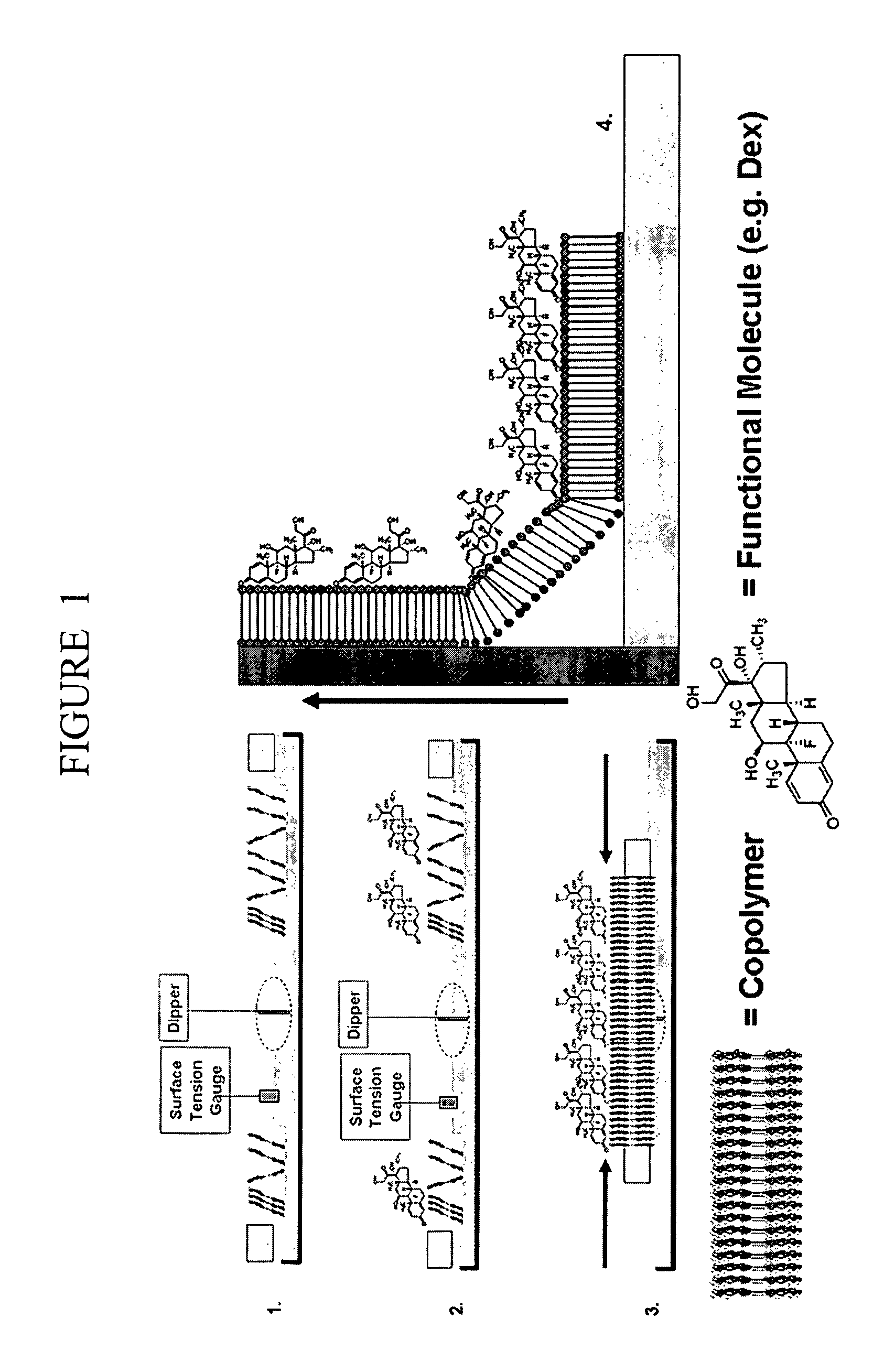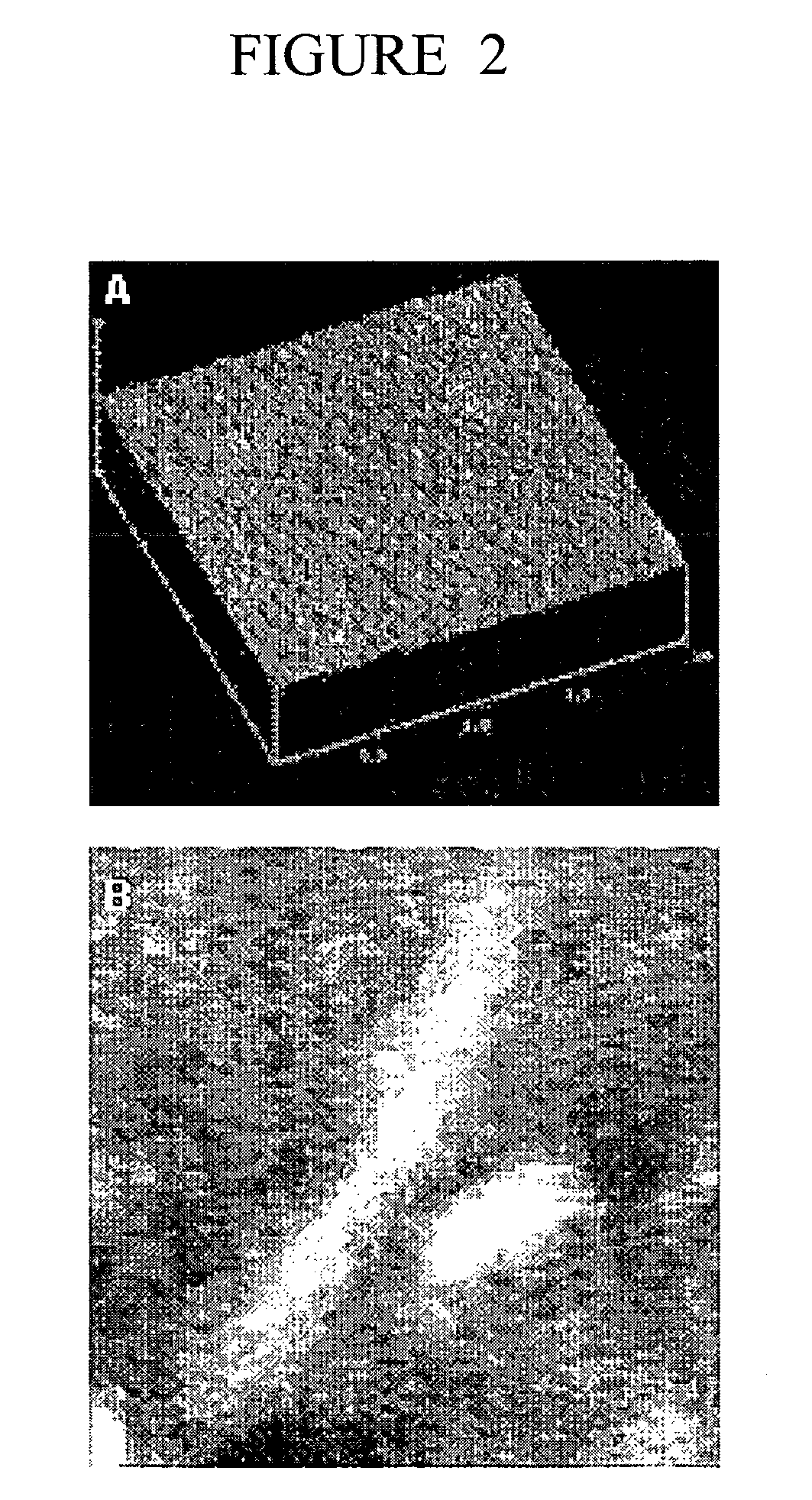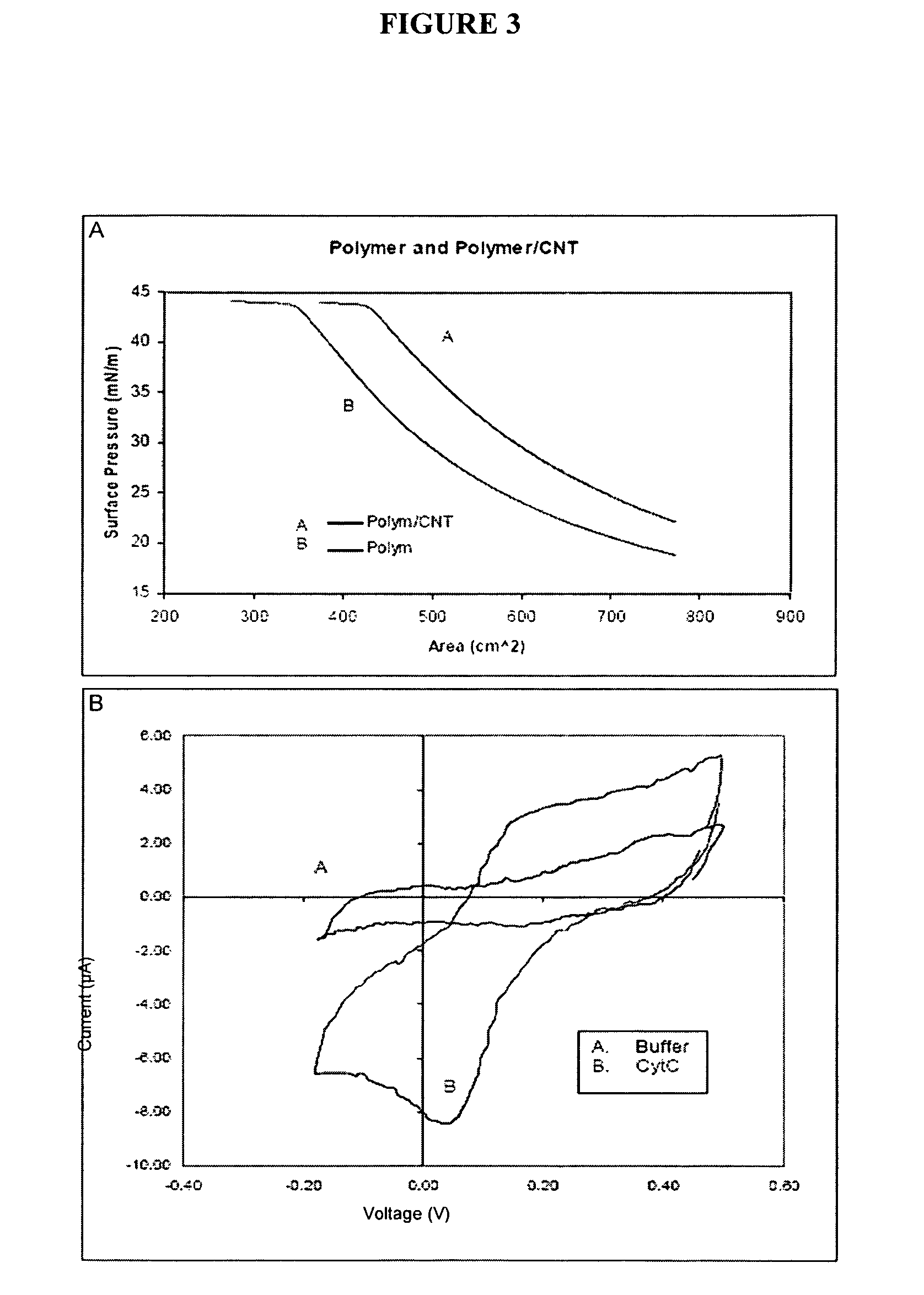Polymer nanofilm coatings
a technology of polymer nano-layers and coatings, applied in the direction of coatings, prosthesis, transportation and packaging, etc., can solve the problems of insufficient biocompatibility of medical implants, inflamed surrounding tissues, and increasing the number of medical devices, so as to enhance the bio-longevity of the device, the effect of enhancing the effect of drug efficacy and wide range of medically significant functionalities
- Summary
- Abstract
- Description
- Claims
- Application Information
AI Technical Summary
Benefits of technology
Problems solved by technology
Method used
Image
Examples
example 1
Polymer Preparation and Characterization
[0070]The PEO-PMMA and PMOXA-PDMS-PMOXA copolymers were solubilized to 0.1 mg / ml in chloroform and stirred overnight to result in a translucent, homogeneous solution for LB deposition. The thickness of the materials may be characterized, using a PMOXA-PDMS-PMOXA triblock structure as an example, by performing a secondary treatment of the chloroform-solubilized copolymer with toluene and suspending a droplet across a 25 μm-thick hydrophobic septum flanked by 2 Ag / AgCl electrodes for capacitance measurements as given by: C=∈o∈1A / d, where C is the membrane capacitance, ∈0 is the permittivity of free space (=8.9×10-19 F / m), ∈1 is the relative dielectric constant of the PDMS hydrophobic block, A is the measured area of the annulus in the septum (=250 μm), and d is the thickness of the membrane. The resultant thickness of the materials were determined to range between 3-4 nm [14-16] for the triblock structure. As such, we expected the diblock copoly...
example 2
General Langmuir-Blodgett Film Fabrication Protocol for Polymeric Substrates
[0071]LB films were fabricated using a KSV 2000 Standard Langmuir Trough with a Teflon® base and a subphase of water. To preclude sample contamination from ambient particles, the entire trough was covered with a plastic case and a small door was integrated to allow for manual manipulation / cleaning of the trough. The base was cleaned with chloroform using a cotton swab and large tweezers and then rinsed thoroughly with nanopure water. The water was then swept using cotton swabs into the central reservoir of the trough and suctioned off using a vacuum pump. This step was performed three times to ensure trough cleanliness. The trough was then filled with nanopure water while paying careful attention not to deposit water droplets along the edge of the trough. The Wilhemy platinum pressure sensing plate (stored in MeOH was then thoroughly rinsed using nanopure water, and subsequently sterilized using a torch. The...
example 3
Single-Walled Carbon Nanotube Preparation / Deposition for Bioelectricity Measurements
[0072]Single walled carbon nanotubes (SWNT) (Sigma-Aldrich, Inc. St. Louis, Mo., USA) were solubilized to 1 mg / ml in chloroform with overnight stirring. Following the addition of PEO-PMMA or PMOXA-PDMS-PMOXA polymer solutions onto the Langmuir trough to a starting pressure of 15-20mN / m, the SWNT's were then added in a dropwise fashion to minimize Langmuir film perturbation. Changes in surface pressure as a result of SWNT addition were noted and following 30 minutes to allow for the film to reach equilibrium, compressions were performed at a rate of 1 mm / min to maximum pressures of 30-40mN / m for LB deposition onto gold-coated glass slides at a rate of 1 mm / min. (VWR Scientific, Inc.) (Films were compressed to >50mN / m until collapse for Langmuir film characterization of film properties). Gold coated slides were utilized in this case as the SWNT films were used to enhance electron harvesting capabilitie...
PUM
| Property | Measurement | Unit |
|---|---|---|
| thickness | aaaaa | aaaaa |
| thickness | aaaaa | aaaaa |
| thickness | aaaaa | aaaaa |
Abstract
Description
Claims
Application Information
 Login to View More
Login to View More - R&D
- Intellectual Property
- Life Sciences
- Materials
- Tech Scout
- Unparalleled Data Quality
- Higher Quality Content
- 60% Fewer Hallucinations
Browse by: Latest US Patents, China's latest patents, Technical Efficacy Thesaurus, Application Domain, Technology Topic, Popular Technical Reports.
© 2025 PatSnap. All rights reserved.Legal|Privacy policy|Modern Slavery Act Transparency Statement|Sitemap|About US| Contact US: help@patsnap.com



